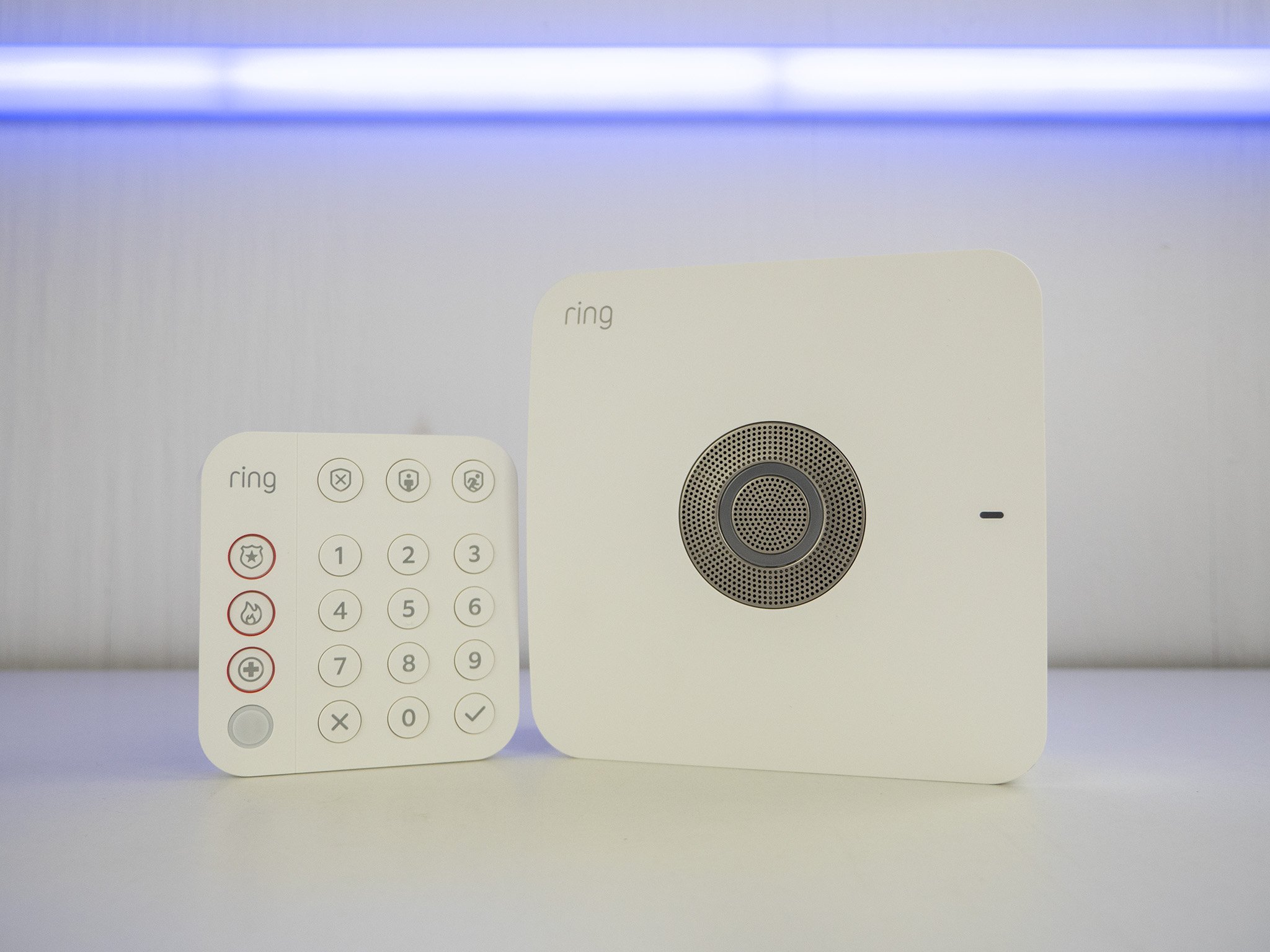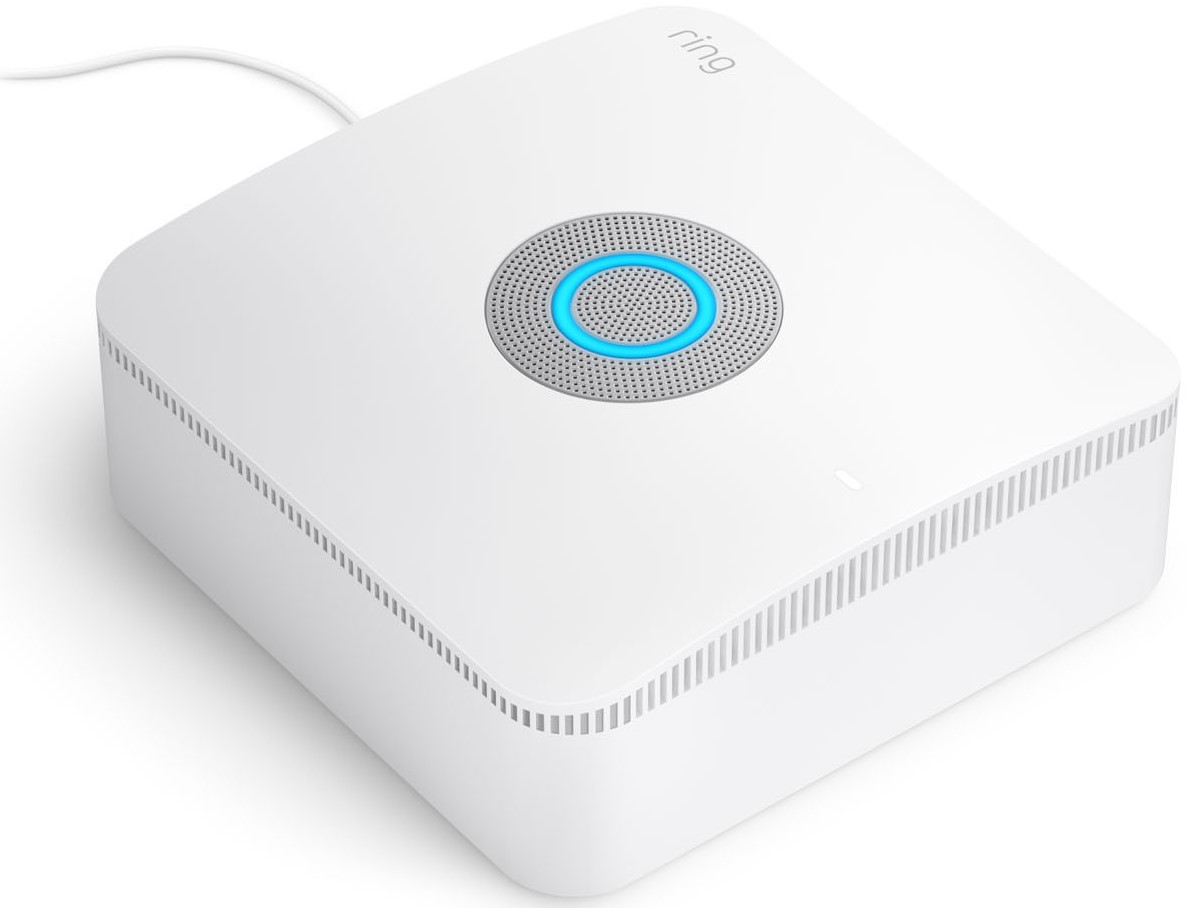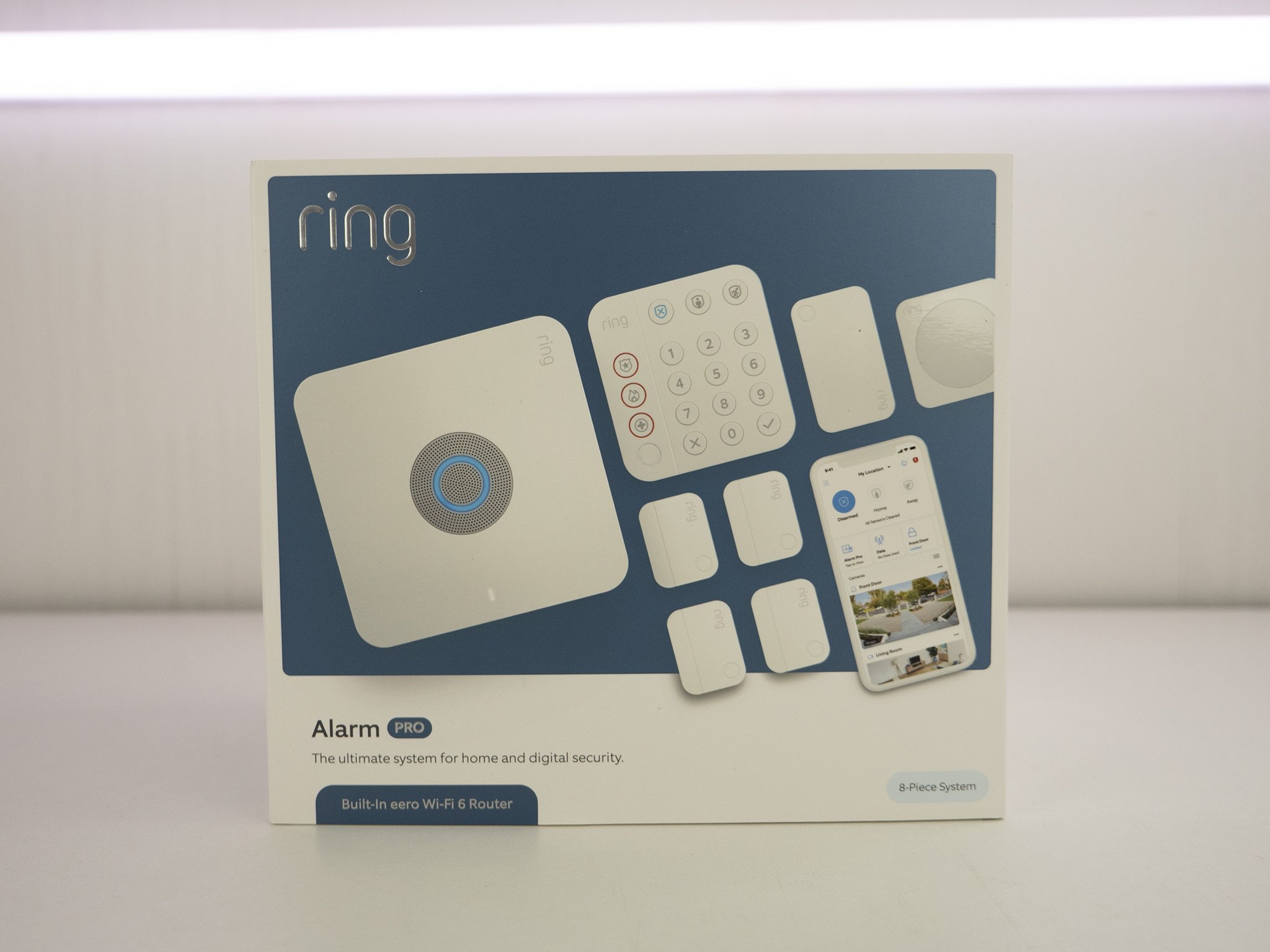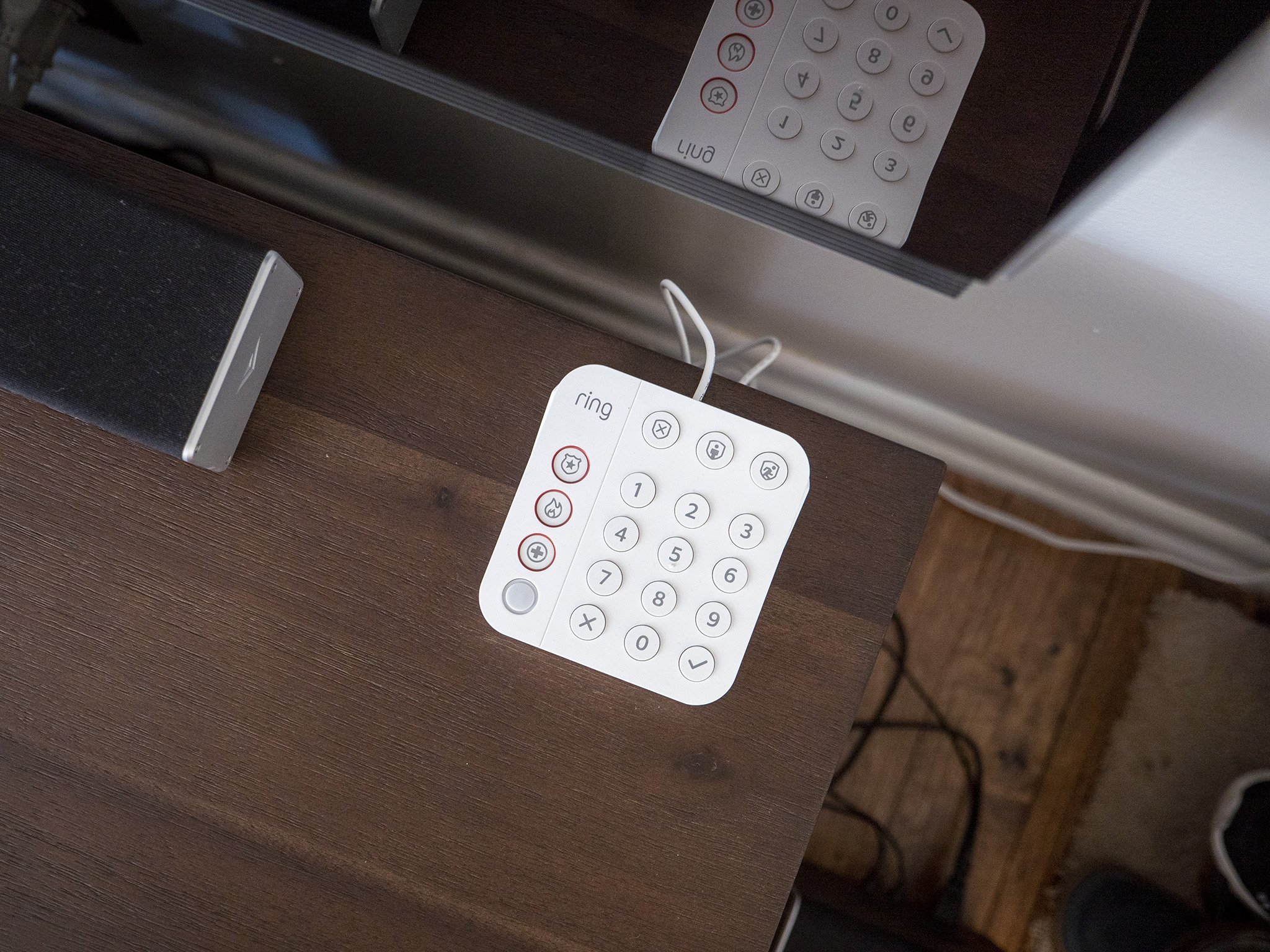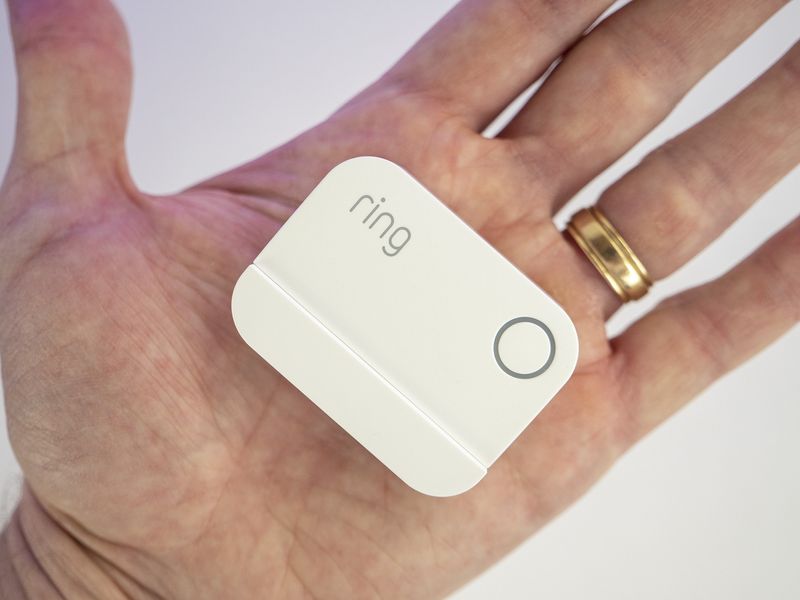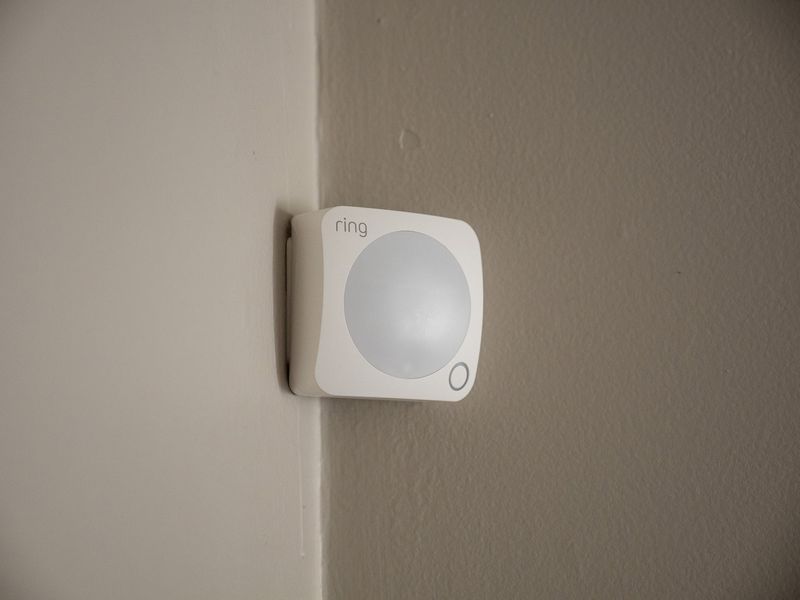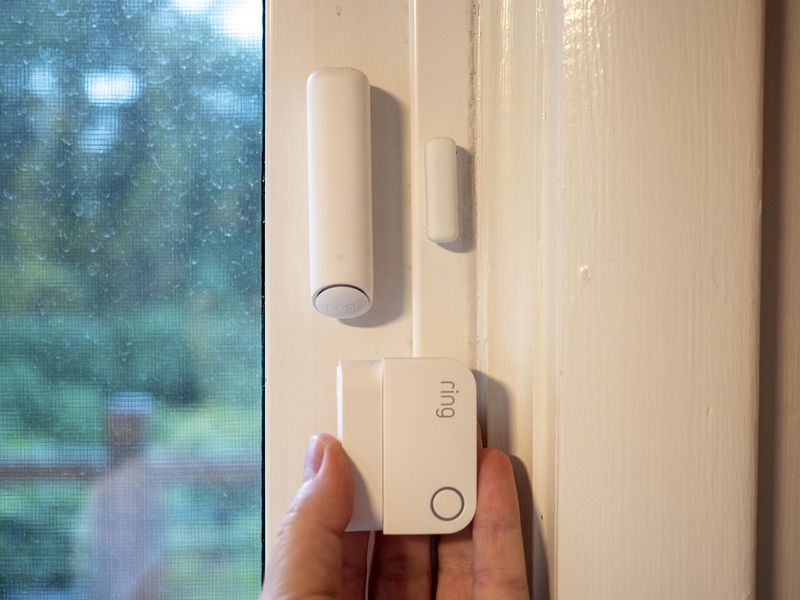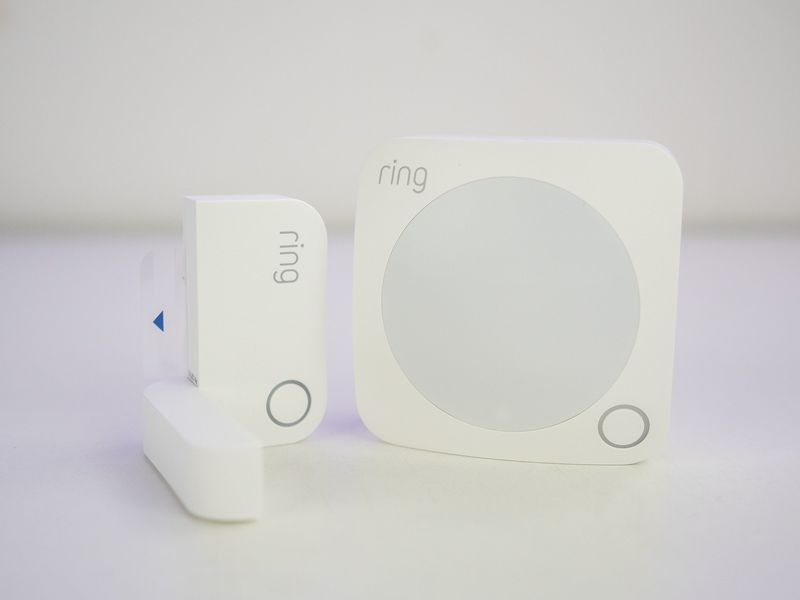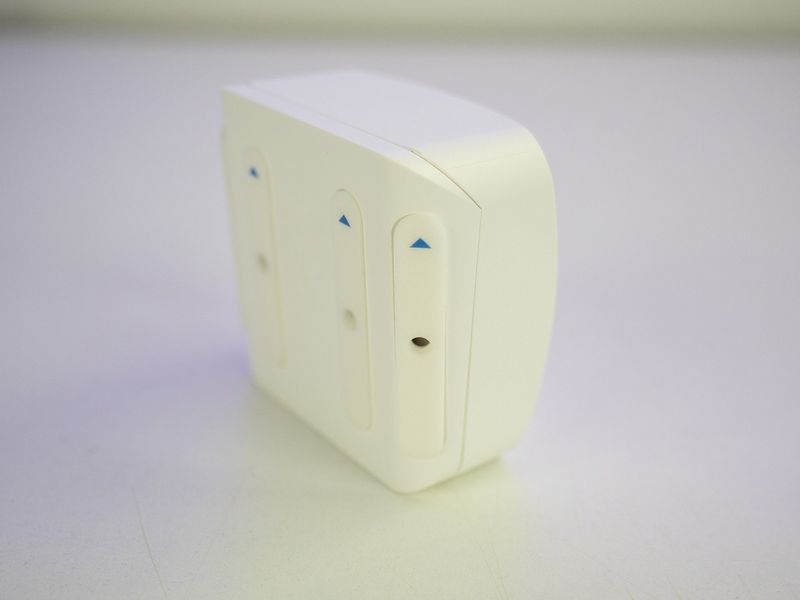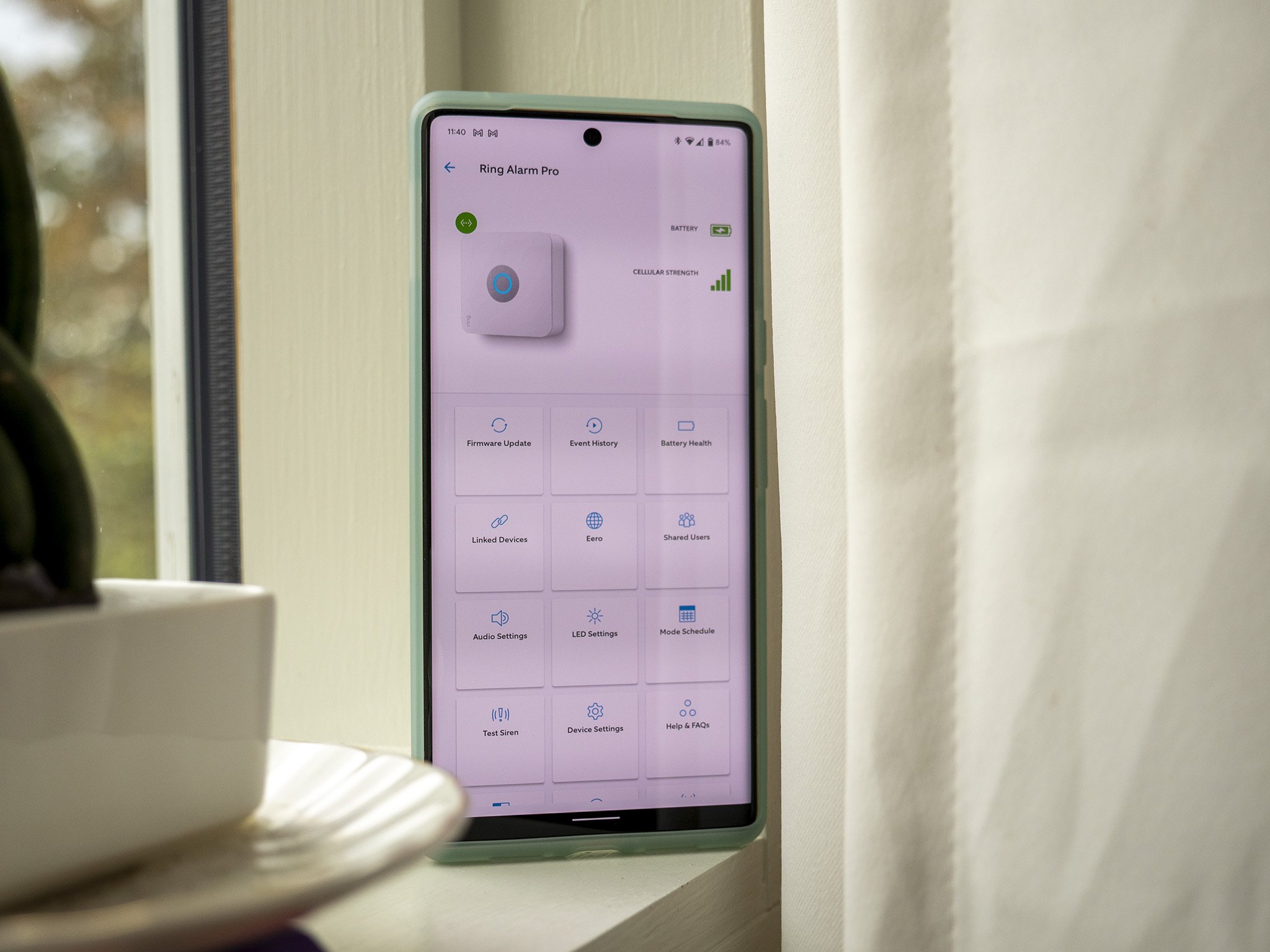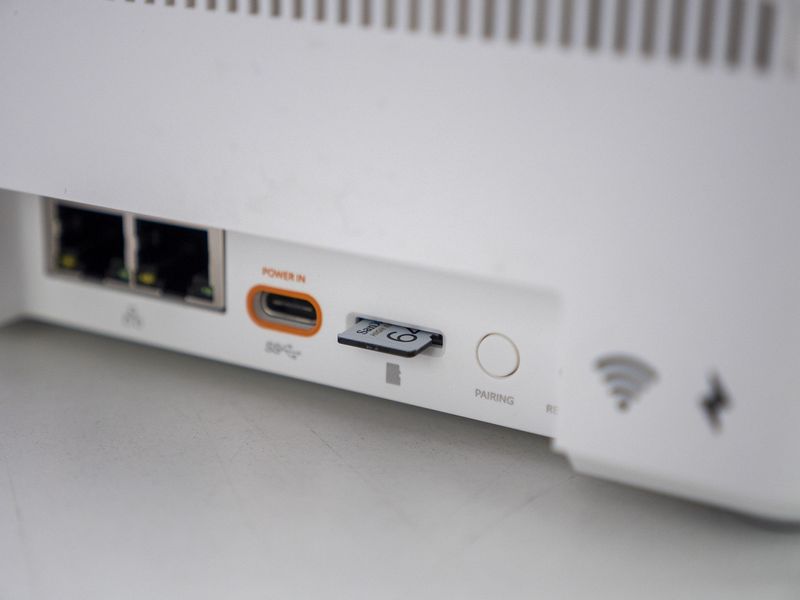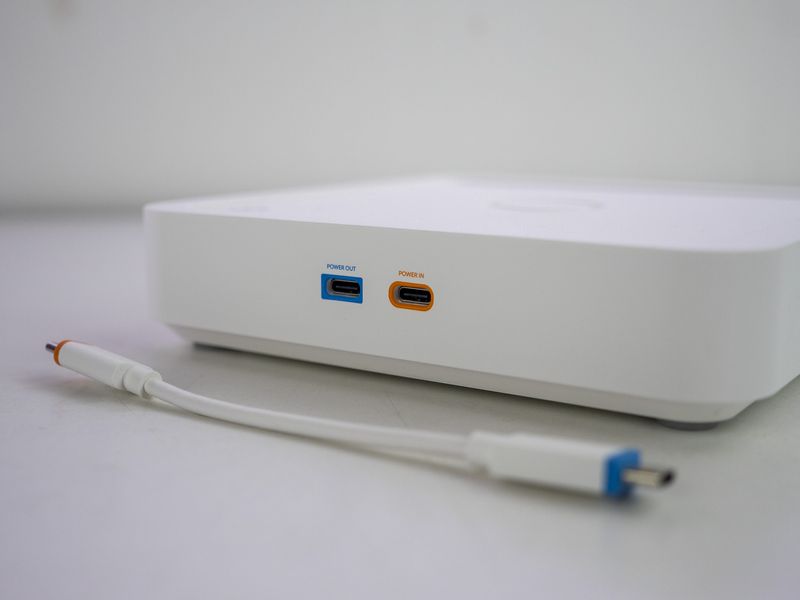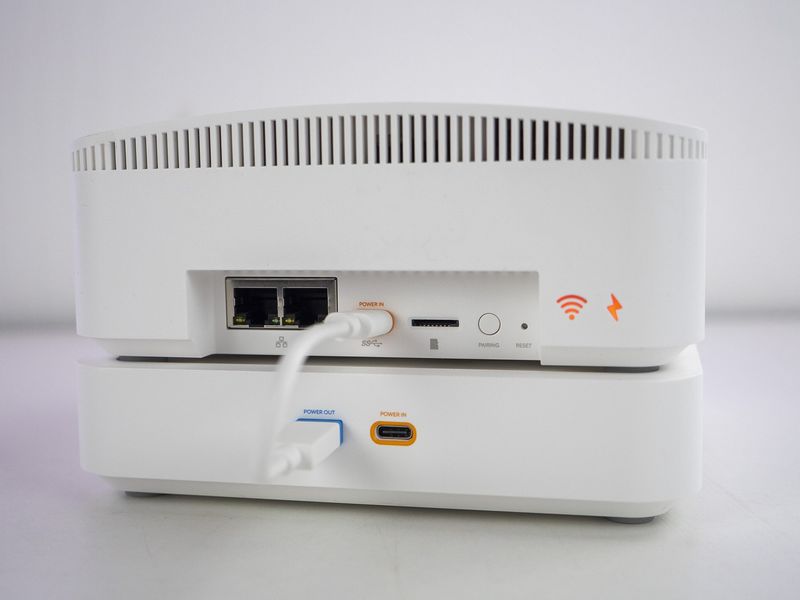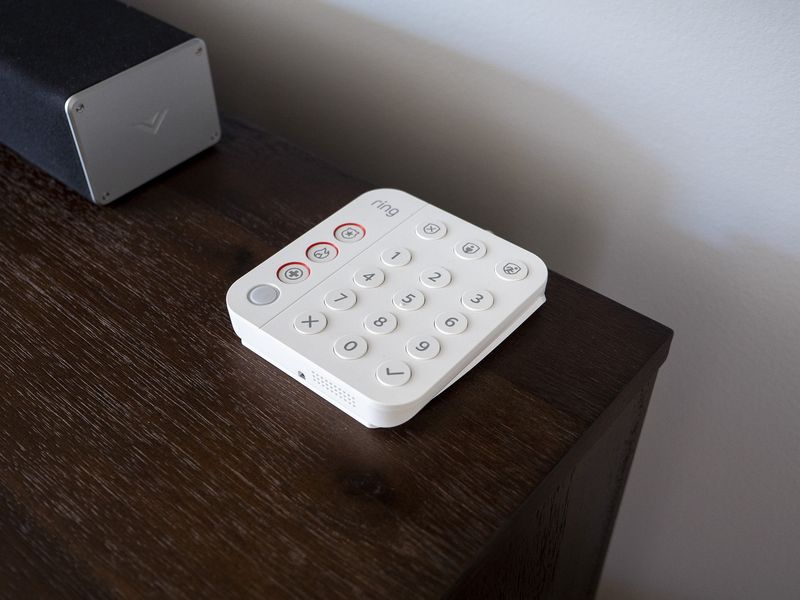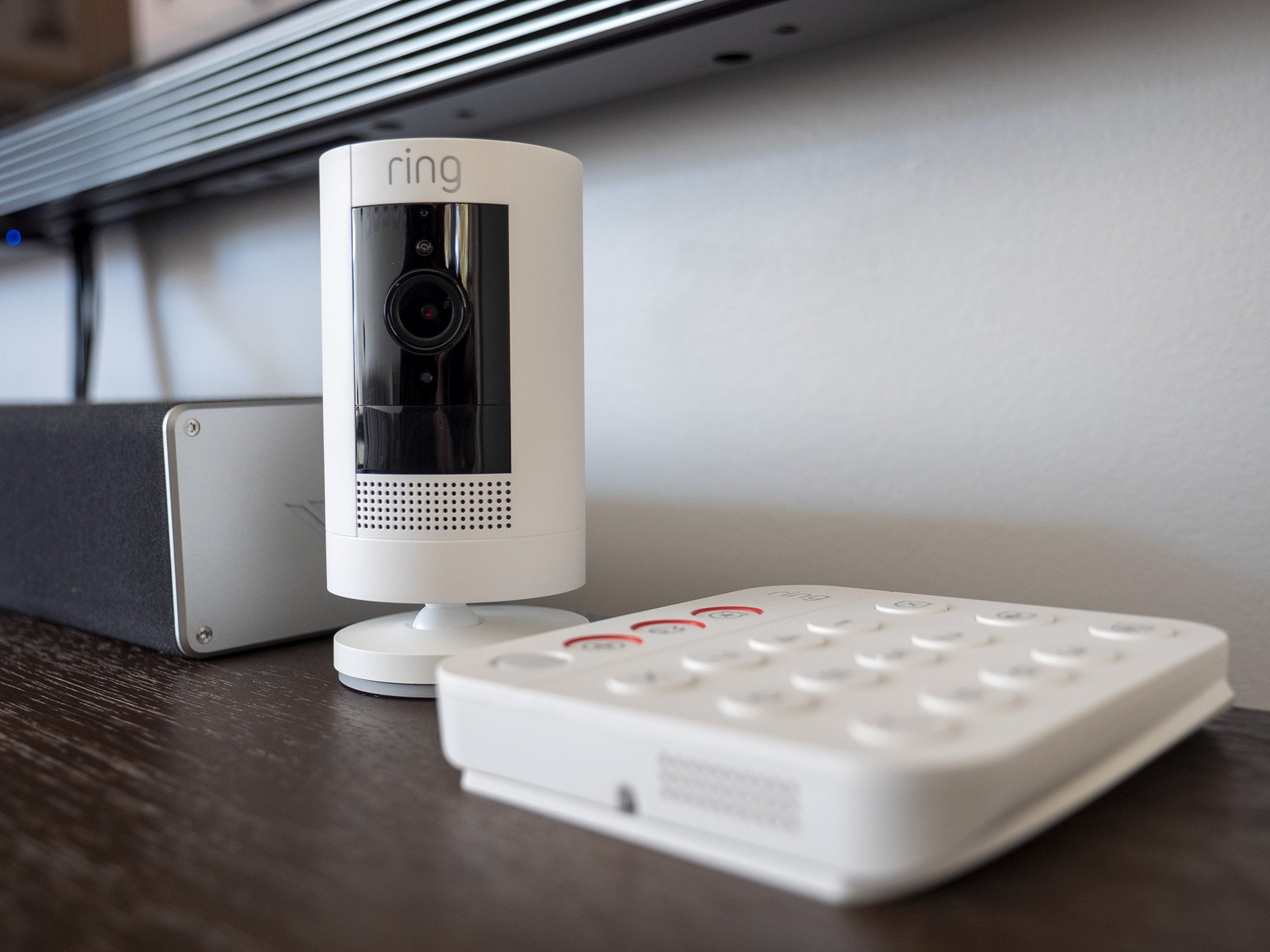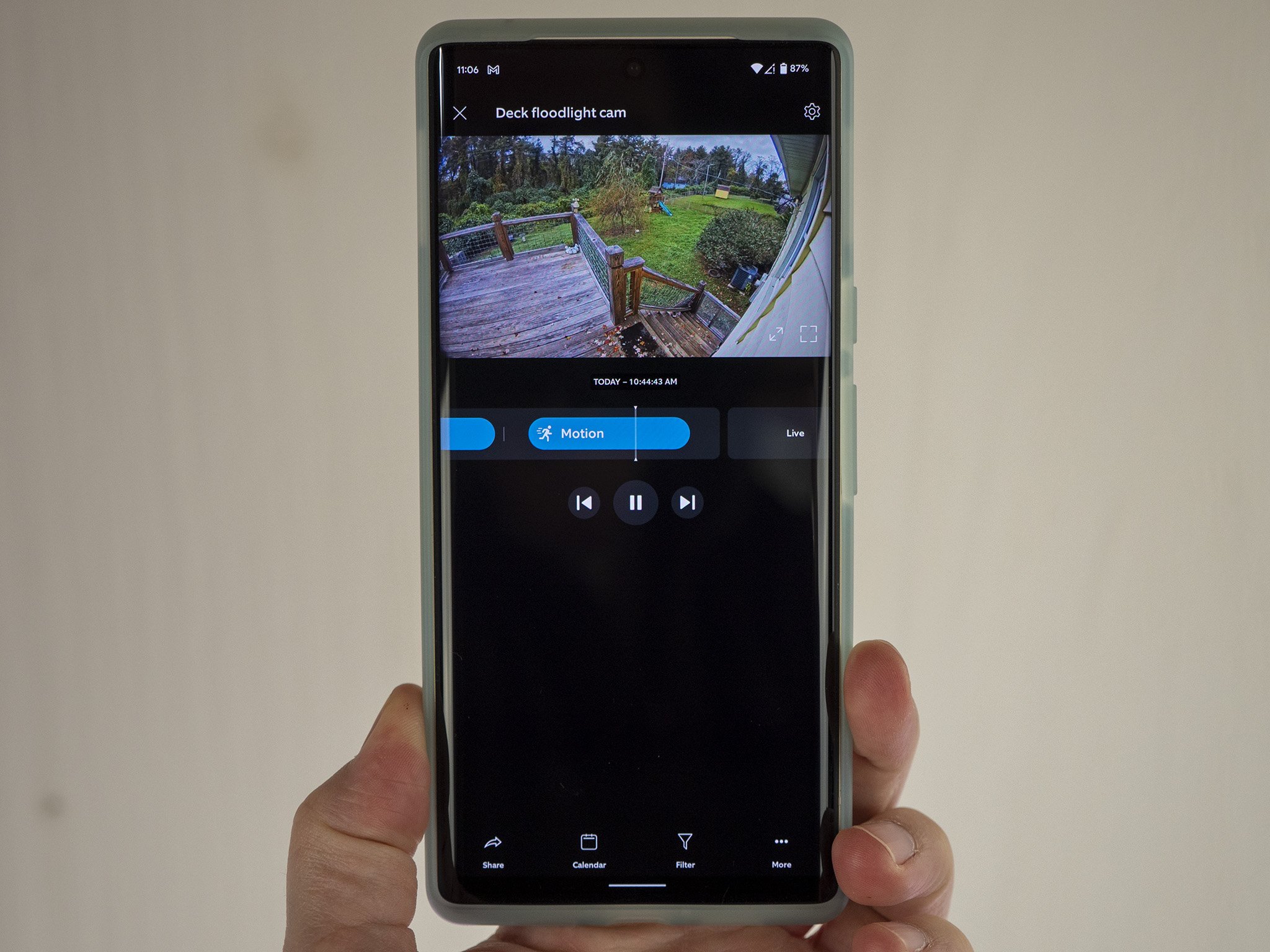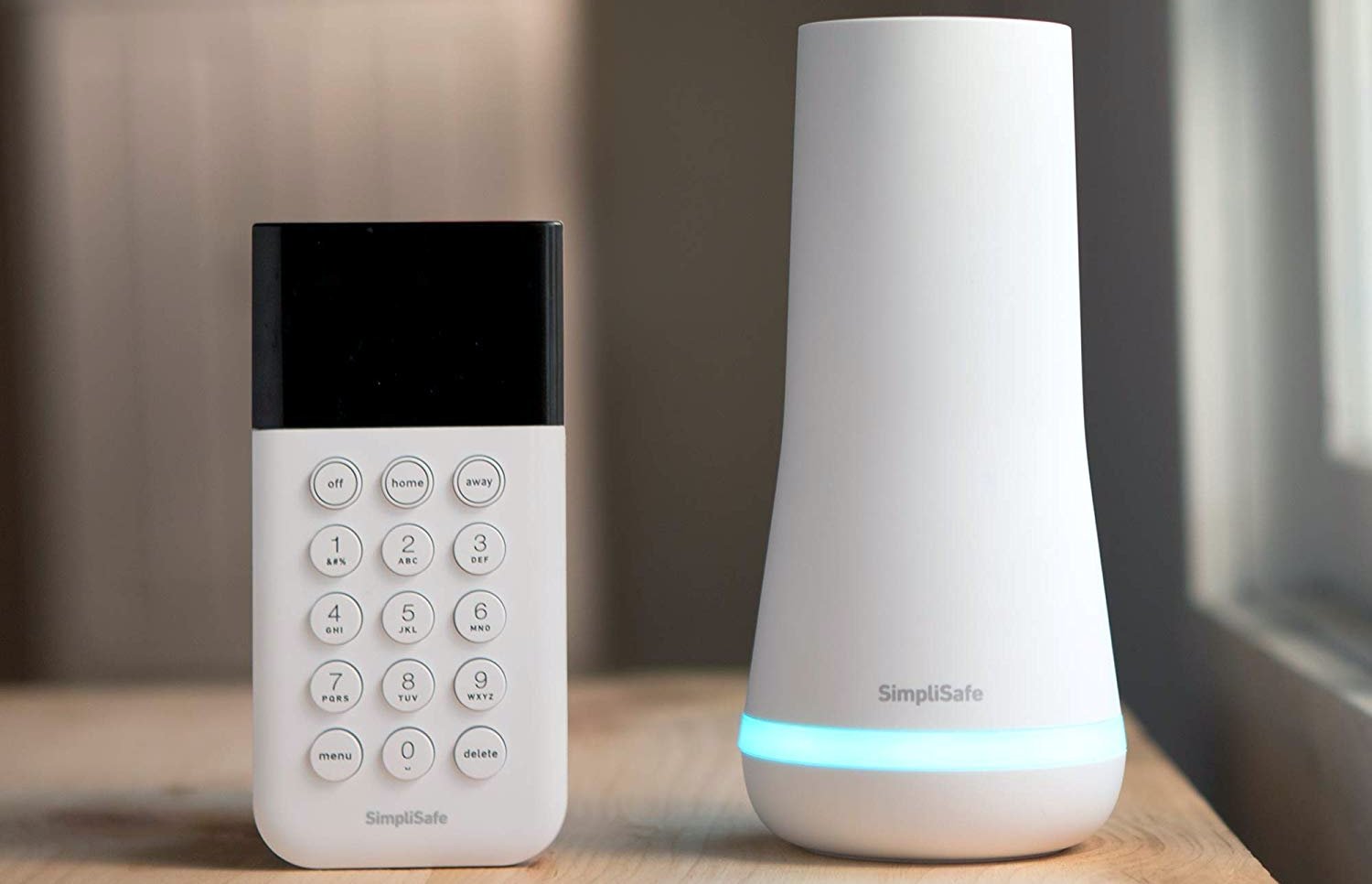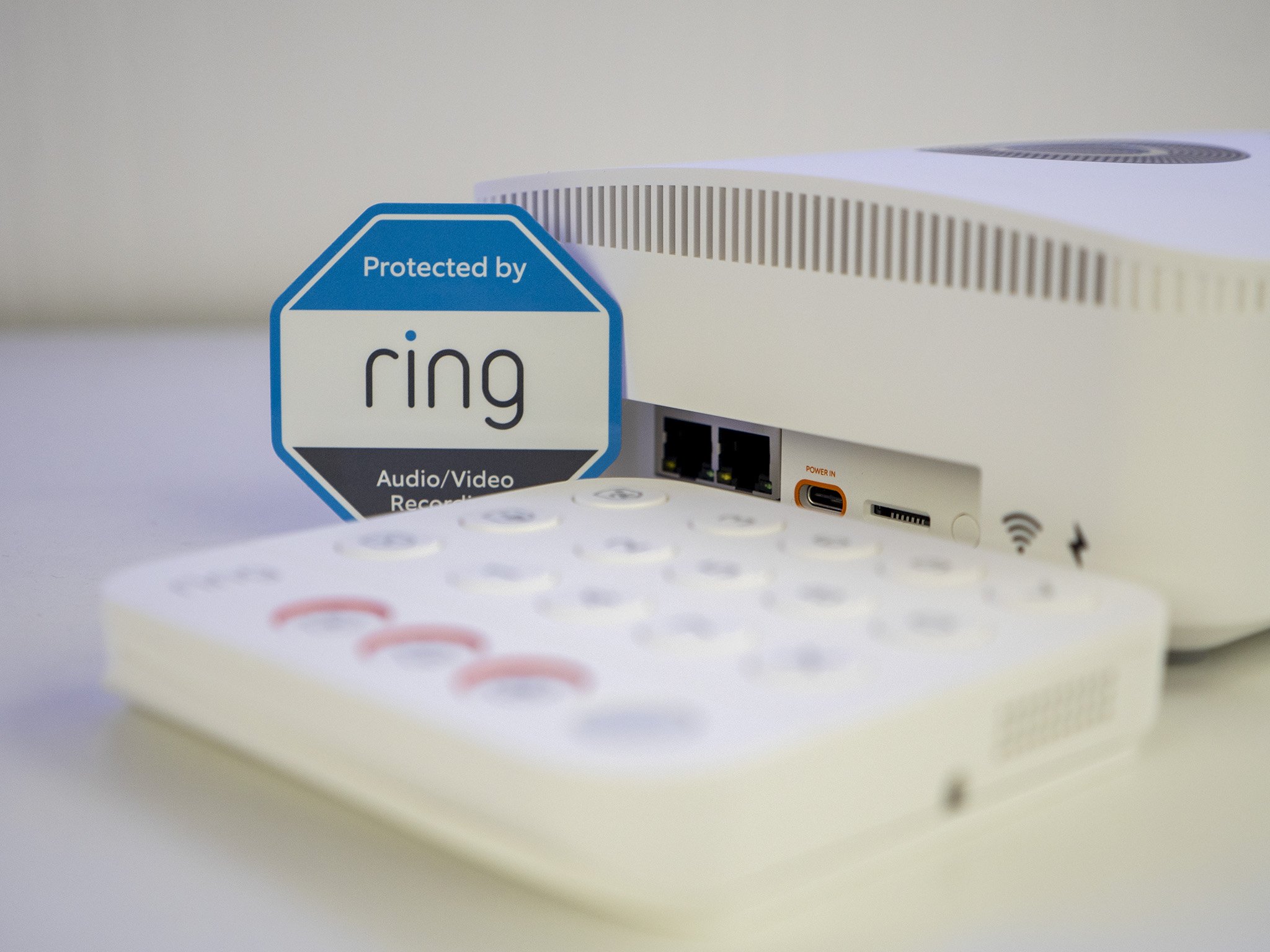The alarm system with an Eero router built right in.
Since the launch of the original Ring Alarm system in 2018, Ring refined its product only a few times with the most recent launch, including a redesigned keypad and sensors. This time, the Ring Alarm Pro ups the ante by featuring an Eero Wi-Fi 6 router inside, a better and more versatile battery backup system, and the ability to finally store video taken from your Ring cameras locally on a microSD card.
But while it may seem like many of these steps are designed to make the do-it-yourself alarm system more, well, do-it-yourself, the reality is that the best features are still kept behind a paywall, ensuring you'll always want to keep a Ring security subscription active. Still, Ring's subscriptions costs are a pittance when compared to the other best home security systems.
If you're debating between the two, the $50 difference between the regular Ring Alarm and the Ring Alarm Pro is well worth the price, so long as you're planning on keeping an active subscription. Heck, thanks to the built-in AT&T SIM, it can even serve as backup internet for your whole home on the odd occasion your ISP goes down. It's a great quality of life upgrade that makes Ring's already great system a more robust experience.
Ring Alarm Pro
Bottom line: Ring Alarm Pro is an all-in-one DIY home security solution that'll serve as your new Wi-Fi 6 home router, store video locally for all your Ring cameras, and even give you backup internet from AT&T if your home ISP goes down. While it still doesn't play well with non-Ring smart home devices, it's the best option for Ring-centric households.
The Good
- Incredible built-in value
- Easy to install and set up
- Built-in Eero Wi-Fi 6 router
- Battery backup
- Support for many sensor types
- Ring app is easy to use and powerful
The Bad
- Local video storage is paywalled
- No support for Google Home or IFTTT
- Cost of extras can add up quickly
From $250 at Amazon From $250 at Best Buy From $250 at The Home Depot
Ring Alarm Pro: Price and availability
The Ring Alarm Pro 8-piece starter kit retails for $300 and can be found at Amazon, retailers like Best Buy, and Ring's website. It's $50 more than the regular Ring Alarm 8-piece starter kit.
Larger homes can pick up the 14-piece starter kit for $380, which includes additional window and door sensors, as well as a secondary keypad for a back door or basement entrance.
Alternatively, you can upgrade your existing Ring Alarm system by separately buying a Ring Alarm Pro base station for $250. This will improve your current system by adding in better battery backup options, an Eero Wi-Fi 6 router, backup AT&T internet via AT&T's 4G LTE network, and the ability to store footage captured from your Ring cameras locally via a microSD card you can insert into the base station.
Ring Alarm Pro: What you'll like / What's good
From the moment you open the box, Ring lays everything out exactly as you would expect. Ring's packaging is always a great experience, no matter what product you buy, and the setup process couldn't be more effortless. If anything, finding a place to put your Ring Alarm base station is a bigger ordeal than anything you'll run across in the setup process — especially if you pick up one of the additional battery backup base stations called Ring Power Packs.
Setup is as easy as plugging it in and signing into the Ring app.
With the Ring app open, all you'll need to do is add a new Ring Alarm from the devices section. You'll give it a name, tell the Ring app what room it's being stored in, and the rest is as simple as plugging the keypad in or pulling the plastic tab out of a sensor to activate it.
All of the sensors are already paired to the base station from the factory and will automatically link the moment they're active. You'll even see a handy status in the app to let you know what all is included in your system and whether it's active.
All of the sensors are well designed and thought-out, with reasonable sizes for the door/window sensors and an excellent adhesive design for the motion sensor to be mounted easily in the corner of a room or flat against a wall.
Ring has made several improvements to its system since the last time we reviewed it, including the ability to make a chime for when doors and windows are open and closed. If you just want chimes removed for a single sensor and left on for the others, that is an easy solution that only takes a few taps in the app.
With Ring Alarm Pro, you can finally store your Ring camera footage locally via microSD card.
But the sensors and keypad themselves are no different from the second-generation Ring Alarm, which launched in 2020. The difference here is the base station, which can be purchased separately and added to an existing Ring Alarm system if its new features tickle your fancy.
Housed inside that beefy squared-off base station is a full-fledged Eero Wi-Fi 6 router. You'll even need the Eero app just to configure it, which is brought up in the setup process.
As with any Eero router, you can purchase additional range extenders that'll increase the range of your Wi-Fi 6 network. This can be done whether you plan to use it as your main Wi-Fi router or just to connect those far-flung Ring cameras at the fringes of the Wi-Fi range.
Having your Ring cameras on that local network is important when you want to use Ring Edge, which might just be the single best new feature for Ring Alarm Pro. Ring Edge lets Ring users finally store recorded video on local microSD cards, which conveniently slide right into the back of the Ring Alarm Pro base station.
It's a harmonious design that feels incredibly well thought out and is even better executed.
Ring Edge acts as a great way to back up your Ring camera footage, both storing the footage locally and on Ring's cloud systems. That's a first for Ring and a huge step in the right direction, although there's a big caveat that we'll get to in a bit.
Also inside Ring Alarm Pro's base station is an AT&T SIM card that connects to the company's 4G LTE network. This is used as a backup internet solution for either your Ring security system or, if you prefer, your entire home's Wi-Fi network.
Ring's added benefits make this the single best value DIY security system on the market.
Automatic fallback happens when the Ring Alarm Pro base station detects no internet connectivity from any connected Ethernet cables. You can monitor any data used through the Ring app, which is essential since only 3GB is included with a Ring Protect plan. Additional data can be purchased for $3 per GB used in case it's needed.
In the ideal bad scenario — if such a thing exists — your power will go offline. Still, all of your battery-powered Ring cameras will function and record video, storing it locally on the microSD card inside of your battery-backed-up Ring Alarm Pro, which also continues to serve the Wi-Fi network for your home. It's a harmonious design that feels incredibly well thought out and is even better executed.
To take advantage of all these features — particularly Ring Edge or the backup internet service — you'll need to be subscribed to a Ring Protect plan. While that's a bit frustrating for a DIY alarm system, Ring's $20 per month or $200 per year cost for the entire system is less than many other DIY alarm systems. It also comes with an incredible wealth of Amazon security and Eero Secure features.
While it might cost a bit each month, Ring's added benefits make this the single best value DIY security system on the market.
Ring Alarm Pro: What you won't like / What's not good
Among the many new features of Ring Alarm Pro is Ring Edge, a way to finally locally save footage taken from any Ring camera you have hooked up to your system. That could be a Ring Video Doorbell or any other Ring camera, for that matter. Video is saved locally on a microSD card inserted into the designated slot on the back of the Ring Alarm Pro base station.
Local video recording is only available when you have an active Ring Protect subscription which doesn't make much sense.
Problem is, video is only saved locally when you have an active Ring Protect subscription. Like Google's half-baked local storage support on its latest Nest Cam, this feature is ultimately useless for anyone that just wants to record footage instead of paying a monthly subscription fee locally.
It's one thing to lock cloud-based features like people or package detection behind a paywall, but no free local recording is inexcusable, especially when it's just saving to a microSD card.
Not only that, but cameras will only locally record when they're on the Wi-Fi network created by the Eero router built into Ring Alarm Pro. That's fine for anything within range, but I can imagine that many households will run into scenarios where Wi-Fi range isn't good enough for a quality signal and end up having to buy Eero 6 Wi-Fi extenders. At least that's easy.
It's also worth noting that you'll need at least one Ring Power Pack to take full advantage of the backup Wi-Fi and internet capabilities. Without one — an additional $130 add-on — Ring Alarm Pro just goes into low power mode, which only serves as a battery backup for your alarm itself. At least that part includes cellular backup, though.
Services like IFTTT and Google Home don't work here.
Getting my Ring Alarm Pro integrated with non-Ring smart home devices was more frustrating than I'd like. Much of this is because I have quite a mixed smart home, while others might have more devices that work better with Ring's ecosystem. As it stands, I need services like IFTTT to get things humming and working together cohesively.
Unfortunately, there's no IFTTT integration for Ring Alarm — only Ring cameras and video doorbells — so I had to look elsewhere to get similar functionality. However, the SimpleCommands platform offers the ability to granularly link your individual Ring Alarm devices — even differentiating between your keypad and each and every motion or contact sensor on your system — and connect it to other smart devices.
I found that SimpleCommands isn't quite a proper replacement for IFTTT, though, and isn't nearly as user-friendly, in my experience. Unfortunately, that leaves me with some fairly complex solutions to get all my smart home devices working together since the Matter initiative isn't finalized just yet.
Ring Alarm Pro: Competition
Simplisafe is probably the most recognizable brand name in the DIY alarm space, and for good reason. It has established itself not just as a value leader, but also as a brand that encompasses your entire home security ecosystem. Simplisafe offers customizable bundles perfect for any size home, from a small apartment to a mansion. Not only that, but they have a suite of cameras, sensors, and other utilitarian security devices you might never have thought of before.
The biggest downside is that Simplisafe's products really only work with each other and don't support virtual assistants very well, if at all. You'll also find that video can't be cast to TVs or smart displays, as the phone app is the only way to play.
If you're just looking for ultra-high value, it's impossible to get any better than Wyze. The $100 DIY security system supports up to 100 sensors, and the ecosystem contains almost everything you'd ever need, from smart locks to a bevy of cameras. Wyze even works well with Google Home — not just Amazon Alexa — although it's worth noting that people seem to regularly complain about quality issues with the hardware. It's incredibly inexpensive for a reason, though.
Ring Alarm Pro: Should you buy it?
You should buy this if ...
- You need home security and a router upgrade
- You want to be able to store your Ring camera footage locally
- You want a DIY system that's easy and reliable
You shouldn't buy this if ...
- You don't want to pay for a subscription to get the best features
- You don't want to have to buy extra hardware to get all the features
- You're in a Google Home household
Ring Alarm Pro isn't the cheapest DIY security system, but it's also not the most expensive. It's a happy middle ground in many respects, yet, also offers compelling features that other DIY security systems can't provide. A fully-fledged Eero Wi-Fi 6 router with backup AT&T internet inside, support for battery backups, and even local storage for Ring cameras round out a truly excellent DIY security system.
My biggest beef with Ring Alarm Pro is its lack of functionality with Google Home and services like IFTTT. However, Ring is owned by Amazon and, as you might expect, tends to stick to the Amazon ecosystem in most cases. As such, it's best to select Ring if you're an Amazon or Ring household since things will work well together without much of a fuss.
Ring Alarm Pro
Bottom line: Ring Alarm Pro is an amazing way to protect your home, but it's far more than just a DIY security system. It's also your next Wi-Fi 6 router, an excellent backup internet solution, and finally, a way to record your Ring camera footage locally.
From $250 at Amazon From $250 at Best Buy From $250 at The Home Depot
Source: androidcentral
